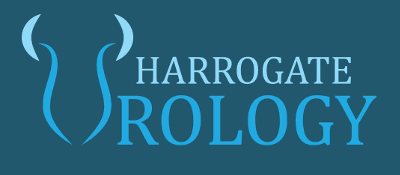What is the prostate?
The prostate is a walnut-sized gland that forms part of the male genitourinary tract. It encircles the urethra (tube draining urine from the bladder), sitting below the bladder and in front of the rectum.
The main purpose of the prostate is to produce semen, which helps to protect and nourish sperm.
What happens when the prostate enlarges?
With age, the prostate commonly enlarges. This enlargement is called benign prostatic hyperplasia (BPH) and happens mainly in the middle part of the prostate that encircles the urethra. This can result in problems passing urine, either because of direct obstruction or secondary irritation of the bladder.
What symptoms are caused by prostate enlargement?
Voiding or obstructive symptoms:
- Poor stream. The urine flow is weaker, taking longer to empty the bladder.
- Hesitancy. Waiting longer at the toilet before the urine starts to flow.
- Dribbling. This usually occurs at the end of the urinary flow or after you have finished.
- Poor emptying. You may feel your bladder is not completely emptying.
Storage or irritative symptoms:
- Frequency. You may pass urine more than usual. This can be particularly annoying at night resulting in poor sleep.
- Urgency. You may need to rush to the toilet and sometimes leakage can occur if you don’t get there in time.
Having an enlarged prostate does not necessarily result in symptoms. Some men have large prostates with no symptoms. Conversely, some men have small prostates that cause symptoms.
What complications can occur?
- Urinary retention. This is the inability to pass urine and is often very painful. Initial treatment for this is to insert a plastic tube (catheter) into the bladder.
- Incomplete emptying/chronic retention. This can lead to urinary tract infections, bladder stones, kidney damage and incontinence.
How will I be assessed?
A detailed history of your symptoms and examination (including digital rectal examination) is vital to tailoring your treatment. At your clinic visit the following investigations are available:
- ‘Flow test’. This allows assessment of the strength of your urinary flow.
- Ultrasound. This provides an assessment of your prostate size and bladder emptying.
- PSA. This prostate blood test may have already been taken by your GP.
- Cystoscopy. A camera test of the waterpipe and bladder.
What are the non-surgical treatment options available?
- General measures. Often simple lifestyle changes such as reducing caffeine intake and fluid intake modification are sufficient.
- Medical therapy. Alpha-blockers (e.g. tamsulosin), 5-alpha reductase inhibitors (e.g. finasteride) and PDE-5 inhibitors (e.g. Tadalafil) can help with voiding symptoms. Anticholinergics (e.g. solifenacin) can help with storage symptoms.
What are the surgical treatment options available?
- Bipolar TURP. A cystoscope (narrow telescope) is passed through the urethra to the prostate. A semicircular loop of wire then removes small chips of the prostate. This operation nearly always gives good relief of symptoms.
- Prostatic urethral lift (UroLift). Implants are placed into the prostate to part the obstructing lobes. There are no adverse sexual side effects and commonly no catheter is required afterwards.
- Prostate enucleation. Laser or bipolar energy is used to remove the lobes of the prostate ‘en-bloc’. This is particularly beneficial for large prostates.
- Prostate vaporisation. Laser or bipolar energy is used to vaporise prostate tissue. There can be less bleeding and so it is felt to be safer for patients on anticoagulant medication (e.g. warfarin).
Using state of the art bipolar technology, Mr Gill is able to offer all the above prostatic removal techniques. Therefore, along with UroLift, you can be assured of the best treatment for your individual circumstances.




